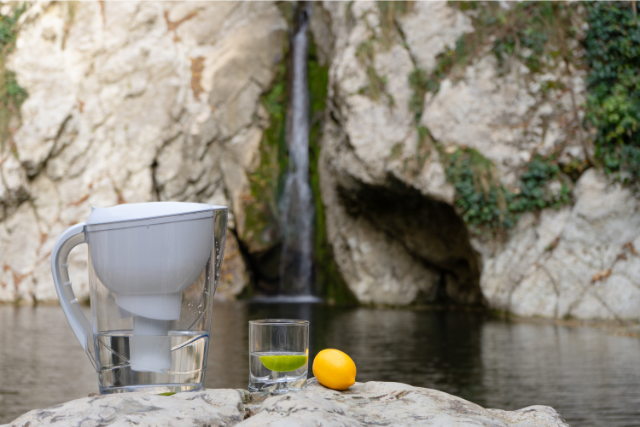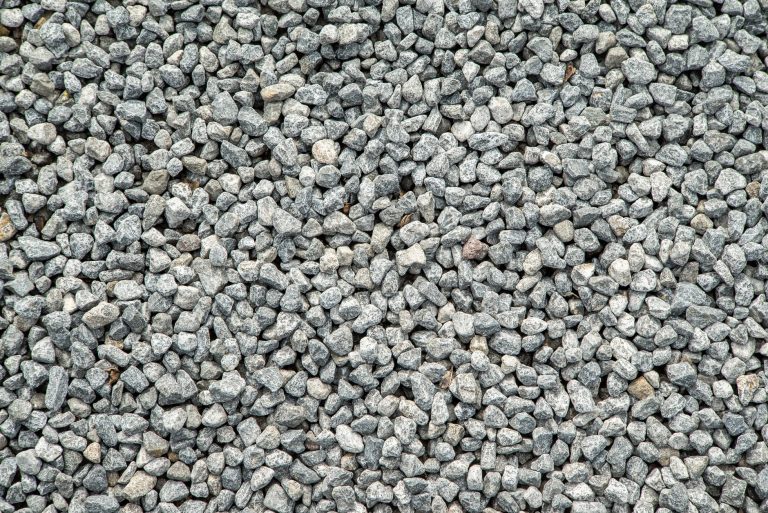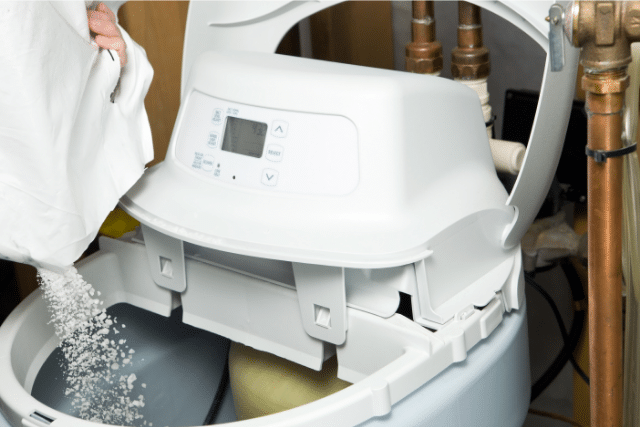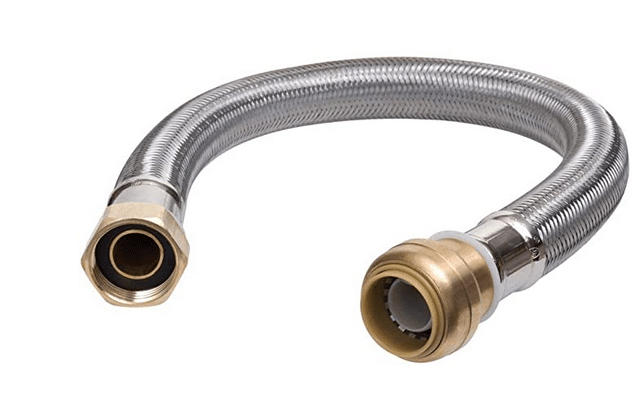How To Remove Iron From Bore Well Water
Iron is considered as an inorganic type element present naturally in the groundwater or corroded water system pipes.
In terms of health, iron provides its benefits like helping to transport oxygen in the blood. But as we all know; nothing is good when it is being used beyond a balanced level.
The presence of iron inside the water is no different. High concentrations of dissolved iron can result in poor tasting, unattractive water that stains both clothing and plumbing fixtures.

Effect Of Iron In Bore Well Water
The main indications the water with excess iron can give you are: unpleasant taste, bad odor, staining on clothes, etc.
Even after mixing with beverages like tea, coffee, or any other alcoholic beverage, the iron-rich water makes them look black/inky or gives an unpleasant taste.
The Environmental Protection Agency (EPA) drinking water standards fall under primary and secondary standards.
Iron comes under the Secondary Maximum Contaminant Level (SMCL), as it involves issues like bad color, taste, odor, etc.
According to its standard, the SMCL of iron in drinking water is 0.3 mg/L and water below these concentrations should not show any previous side effects.
Read: How To Purify Well Water For Drinking At Home
Whether in the bore well water or public or municipal system, iron contamination can happen anywhere. At that time, it is important to contact the water department to identify the problem and take proper actions.
On the other hand, dissolved iron in the river or other surface water can be removed by ordinary purification processes like chlorination, sedimentation, or filtration.
But dissolved iron in the bore well causes the problem which may require different methods. Modern times have invented some techniques that can be used to remove this excess iron from bore well water.
But before we understand how to remove iron, let’s first know how it forms in bore well water and because of it, what disadvantages you may face.
How Iron Forms in Bore Well Water
Before starting the iron removal method, it is important to know various things about that specific iron and contamination.
If you don’t have the knowledge about the iron causing the problem, it is difficult to choose a suitable treatment.
There are four types of iron that can be responsible for the contamination.
Ferrous iron, which basically appears as clear water but if you give it enough time to sit the rust-colored particles will begin to settle to the bottom.
Ferric iron, which happens after getting exposed to the atmosphere and starts oxidization.
Iron bacteria, which mainly can be found in soil, bore well water, or surface water.
And organic iron, which can be found in shallow wells and usually appears in yellow or brown color. Once you know which of these iron types causes the issue it becomes a less complex task to begin the treatment.
Read: How to Filter Rainwater For Drinking at Home
Now, let’s know about how a specific iron gets into drinking water.
Whenever rainwater gets absorbed in the ground, it starts to percolate through soil and rock. Iron is a metallic element that makes up about 5 percent of the Earth’s crust.
These rocks and soil dissolve the minerals that contain iron and hold them in a solution. Water’s hardness and acidity affect the amount of iron that gets dissolved during the percolation process.
As a result, this iron-rich water recharges surface waters and aquifers which serve as drinking water sources like bore wells.
Corroded pipes also can be a source of iron in drinking water as in the presence of oxygen, iron is a reactive element that rusts very easily.
Although present in the drinking water, iron can hardly be found in concentrations greater than 10 parts per million.
That is also why iron is not known to be hazardous to health but in fact, a secondary contaminant. Small concentrations of iron are vital to human health as it helps transport oxygen in the blood.
Disadvantages of Iron inside Bore well Water
For those who use bore well water for drinking, it is extremely important to purify it before using it. Especially after floods, there are high chances that water is contaminated with deadly bacteria.
Also, bore well water or groundwater is hard water and hard water has calcium and magnesium.
These elements are inorganic and that is why the body can not digest them. Even washing your hair with hard water can make your hair, scalp, or even skiing very dry.
One of the most severe disadvantages of drinking bore well water is the illness it causes mainly: Gastroenteritis and Diarrhea. Plus, excess additional iron in the well water causes unpleasant color, taste, odor.
It leaves brown stains on the clothes and even can clog the pipes.
That is why before purification or removal of any harmful substance, there are various factors that need to be considered.
Especially when these processes are being done on a larger scale. Some of the essential factors are: checking odor, checking turbidity, considering pH values, colors in the water, amount of iron, total hardness of water, and total dissolved solids.
How to Remove Iron Content from Bore well Water
In-bore well water or groundwater, iron is mostly in the ferrous state. The solubility of the ferrous state is much higher than that of the ferric state.
It has been observed that as soon as the bore well water or groundwater is taken out to the ground surface, it takes up oxygen from the atmosphere.
If any dissolved iron is present then it gets oxidized to a ferric state forming an opalescent.
The removal of this dissolved from bore well water is generally divided into four methods: Aeration or gas transfer, oxidation of Fe (II), precipitation of oxidized Fe (III), and the removal of precipitated Fe (III)
1. Aeration or gas transfer:
This method can be achieved by different methods. First one: the gravity aeration where water falls or drops to a surface.
The second one is, by spray where water under pressure is discharged through nozzles.
Another one is by bubbling the air through the water. And the last one is by mechanical means such as rotors, paddles, etc. which will help to reduce the water turbulence and increase the gas contact.
2. Filtration
This process is more tricky for groundwater or bore well water as they have large amounts of iron. And leaving any excess iron inside the water is risky to the health of those who use it as drinking water.
This method is also called oxidation filtration. In this method, iron and magnesium get removed from the bore well water.
This filtration method removes the soluble product which is nothing but the conversion of oxidized iron.
3. Oxidation of Fe
The oxidation of the Fe (II) state to Fe (III) state by molecular oxygen is reported to involve the initial formation of FeO2 which then reacts in a specific manner. (follow/prefer proper formula)
4. Shock Chlorination
Shock chlorination is one of the most popular methods. This method is mainly used to remove iron from the water using bleach or chlorine.
The first and very important step is to remove debris, turn the circuit breaker off and remove the cup.
It is very important that you take precautions while handling any kind of electricity in this matter. After that pour 3 pinches of chlorine into the bore well. After mixing the chlorine equally in the water.
Circulate that mixture inside and outside the bore well. And the final step is to flush the container from both sides: inside & outside.
5. Oxidation
This method is also called chemical oxidation, in which the water gets oxidized by electrons. Mainly this method divides hard particles into soluble ones. And it is the most natural process to remove bore well water contamination.
FAQ
What is the best filter for iron removal?
From Air Injection Oxidizing (AIO) filters that are able to remove contaminants like iron and manganese to KENT Iron removal filters, there are various water filtration systems that are available on Amazon.
These products come in wide ranges and sizes and you can choose the one suitable according to your household.
Is it necessary to remove iron from bore well water?
Because the bore water is hard water and fully contaminated, it can not be used for drinking purposes.
However, in countries like India where groundwater or bore well water is the most important source of water, it is definitely necessary to remove harmful elements like iron from the bore well.
Conclusion
Whether it is spring water, bore well water, tap water, or groundwater, nature has already made us a perfect source of water.
However, because of the presence of dissolved or suspended impurities in most natural water bodies, water needed for human consumption does not always occur in a pure form.
All we need to do before consuming it is following the right methods and take proper precautions.
As we have seen earlier, it is much simpler to purify other water forms such as rivers and lakes compared to bore wells.
Still so many technologies are being made every other year specifically for bore well water as it is the main source of water for domestic use.






